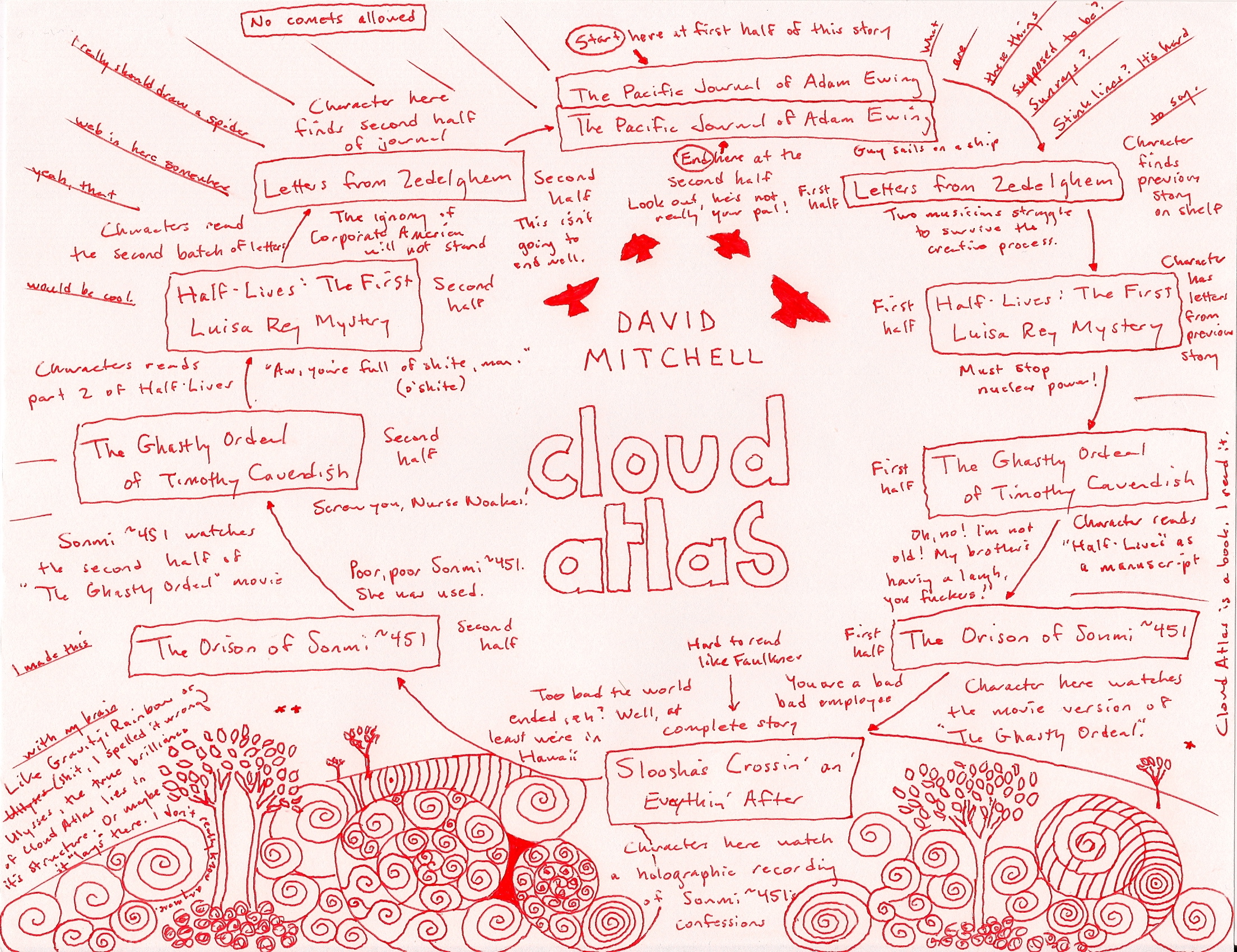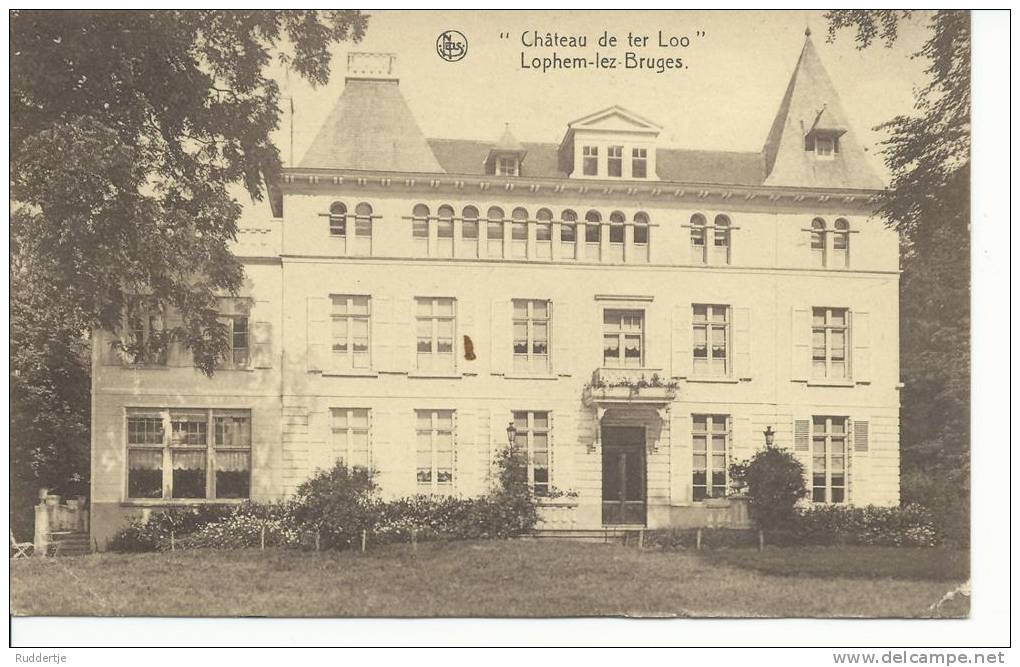A reluctant voyager crossing the Pacific in 1850; a disinherited composer blagging a precarious livelihood in between-the-wars Belgium; a high-minded journalist in Governor Reagan’s California; a vanity publisher fleeing his gangland creditors; a genetically modified “dinery server” on death-row; and Zachry, a young Pacific Islander witnessing the nightfall of science and civilisation—the narrators of Cloud Atlas hear each other’s echoes down the corridor of history, and their destinies are changed in ways great and small.
In his captivating third novel, David Mitchell erases the boundaries of language, genre and time to offer a meditation on humanity’s dangerous will to power, and where it may lead us.
In his captivating third novel, David Mitchell erases the boundaries of language, genre and time to offer a meditation on humanity’s dangerous will to power, and where it may lead us.
Cloud Atlas was brought to my attention by the movie trailer.
Please enjoy Cloud Atlas-Sextet while reading my review.
Cloud Atlas is written in a unique way that I found extraordinarily interesting. The talent it took to pull 6 separate yet interlocking stories together amazes me. Each section is also told/narrated or read by the next stories main character. Mitchell does this going forward in time and then backwards to where we, the reader started. Mitchell also has a talent for ending a story at a cliffhanger so all I really wanted to do was skip ahead and find out what happened.
I am going to do my best to keep any spoilers out of my review, concentrating more on the amazing style and how the book is put together.
 |
| The Chatham Islands from space. Chatham Island is the largest, Pitt Island is the second largest, and South East Island is the small island to the right of Pitt. Image from Wikipedia |
The first story, The Pacific Journal of Adam Ewing, takes place in the Chatham Islands in the 1800's and is written in a Journal style (not my favorite). I had to really pay attention to what I was reading because of the language and vocabulary Mitchell used. I found it authentic and a great way to enrich the readers experience. As I already stated Mitchell has mastered the cliffhanger, and leaves this section hanging mid sentence.
The Second story, Letters from Zedelghem, jumps to the 1930's and is set in Belgium. This section is told in a series of letters that Robert Frobisher writes to Sixsmith as he reads Adam Ewig's journal. Robert is a disgustingly low cad that thinks way too much of himself. A total opposite personality than Adam's and written that way. I did not like this section because of Robert, to not like a story because the characters personality is written so strongly is not a new thing for me just highly uncommon. I can only think of a few other books that I've disliked a character so much. Robert will be added to that very short list.
This is the section where music comes into play, Robert is writing, he is Vyvyan Ayrs amanuensis (I had to look that one up it is a person employed to write/type what another dictates). Can you imagine trying to write out music! I have a background in reading and playing (piano and french horn) and this boggles my mind.
Story 3, Half-Lives The 1st Luisa Rey Mystery takes place in the 1970's and surrounds the controversy of 3 Mile Island. This is the first section written in 3rd person and reads like a story. After the previous section I needed this and really enjoyed this part. Maybe because the story was also moving into territory that I am familiar with.
Now we move onto The Ghastly Ordeal of Timothy Cavendish who works as a publisher for Vanity Press in Great Britain. To me this section started off very confusing with Cavendish's narrative about the death of one of his authors. This is another section where Mitchell was able to create a rather rotten character and I didn't much care what happened to him.
The next two stories take place in the future, An Orison of Sonmi-451 and Slooha's Crossin' An Ev'rythin' After.
I really enjoyed the Sonmi section but then again I am a sucker for science fiction and this story is pure science fiction.
However the final story, Sloosha's Crossin' was really hard to read. Mitchell wrote it in what he viewed as a futuristic way of speaking/writing (kind of a throw back to the first story but much more difficult). This section reminded me of The Time Machine by H.G. Wells where if you go so far forward in time you end up right back where you started, in a Hunter and Gather state.
There are a few elements in this book that constantly come up like the Sextet and a birth mark but this is the first story where the title seems to be explained, done in this sections style, here is what is said...
"I watched clouds a wobbly from the floor o' that Kayak. Souls cross ages like clouds cross skies, an' tho' a cloud's shape not hee nor size don't stay the same, it's still a cloud an' so is a soul. Who can say where the cloud's blowed from or who the soul'll be' 'morrow? Only Sonmi the east an' the west an' the compass an' the atlas, yay, only the atlas o' clouds." pg 308
 |
| click on the image to enlarge |
Now we start going backwards, filling in the cliffhangers.
 |
| Paul Mison's Red Ink Guide to Cloud Atlas |
When it is all said and done I was disappointed with the book as a whole. I enjoyed individual stories, I liked how Mitchell weaved them together. I found the Slooha's Crossin' An Ev'rythin'After story (the longest) to be tedious, dull and difficult to read. It would have been very easy to put down the book and not pick it back up. I am glad I finished it because I did want to know what happened to Adam, Sonmi and Luisa Rey. But I could have done without all the rest.
After reading multiple reviews of those that have read the book and seen the movie I don't know what to do, look forward to seeing the movie or dread it, I am going to watch it either way.
As for reading the book, if you are not a die hard Science Fiction reader you need to skip it and those of you that are Science Fiction readers need to be prepared for something much different.
I'm linking up with Art @ Home's Literary Friday, come join us!









1 comment:
Hmmm.....this really sounds interesting. I don't read a lot of science fiction, but when I do I either love it or hate it. I always have very strong reactions to it one way or another. One of the best books I've ever read was The Dervish House, and it's science fiction.
Thanks for a fantastic review. I watched the trailers.
Thanks for linking-up, too!
xo,
RJ
Post a Comment